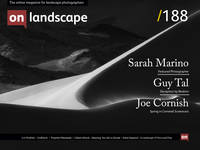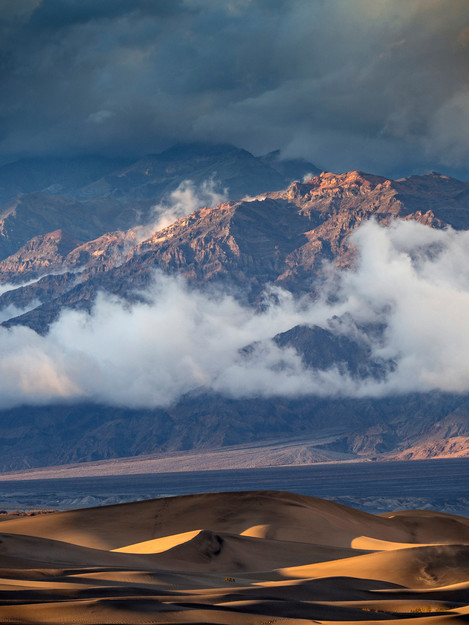Make images for any reason you wish

Colleen Miniuk
Colleen Miniuk fled the grey cubicle walls at Intel Corporation in 2007 to pursue a fulfilling full-time outdoor photography and writing career. Her credits include National Geographic calendars, Arizona Highways, AAA Via, National Parks Traveler, and a broad variety of other publications. She has served three times as an Artist-in-Residence with Acadia National Park.
Colleen is putting the final touches on her next book, Going with the Flow, a part-memoir, part adventure travel story on how she paddled her way out of adversity and into happiness on Lake Powell and the Colorado River.”
Wearing a dress and high-heeled boots, I grabbed my camera, jumped in my truck, and took off down the street. I could no longer bear to watch the low clouds wrap around the mountains and the shadows dance across the sand dunes from my hotel room in Death Valley National Park in California. I had been waiting for a group of workshop participants to arrive but had just received a text message saying they were delayed in Las Vegas. I had time to chase the light. I had to hurry. The storm was clearing.
After turning up a dirt side road, I started making images. First, I made a tight vertical composition to add visual tension to what was already a dramatic scene. I did a little dance, waving my arms and hips from side to side, in pure delight. I waited. The light changed. I made a different image, a horizontal one with extra sky to emphasise the isolation of a distant peak shrouded in fog. I danced. I waited. The light changed again. I made 72 frames in a half hour during a blissful spell I didn’t expect to have.
My workshop participants finally arrived, and I started the workshop the same way I start most of my sessions, with an introductory presentation encouraging participants to connect with the landscape in their own way. As usual, I opened with my definition of what I believed a good photograph was: “An outward expression of what an individual photographer deemed meaningful enough to notice.”
During the next four days, we practised these ideas and techniques to achieve more deliberate, contemplative photographs in various locations, some iconic and some off the beaten path. The first goal of our outings was to simply enjoy and appreciate our surroundings. Then, if a scene moved the participants to make an image, we’d approach it with more engagement and less aimless spraying-and-praying (taking a bunch of photos and praying, usually at home while sitting in front of the computer, one turned out well); to go beyond the “I-was-here” snapshot that thousands, if not millions, of people, already had captured; and to acknowledge that an expressive photograph originates from the mind of a photographer and incorporates weather, light, and location but does not depend upon them. The act of photographing would then be a deliberate one, one resulting from an individually-defined deeper relationship with a place.


